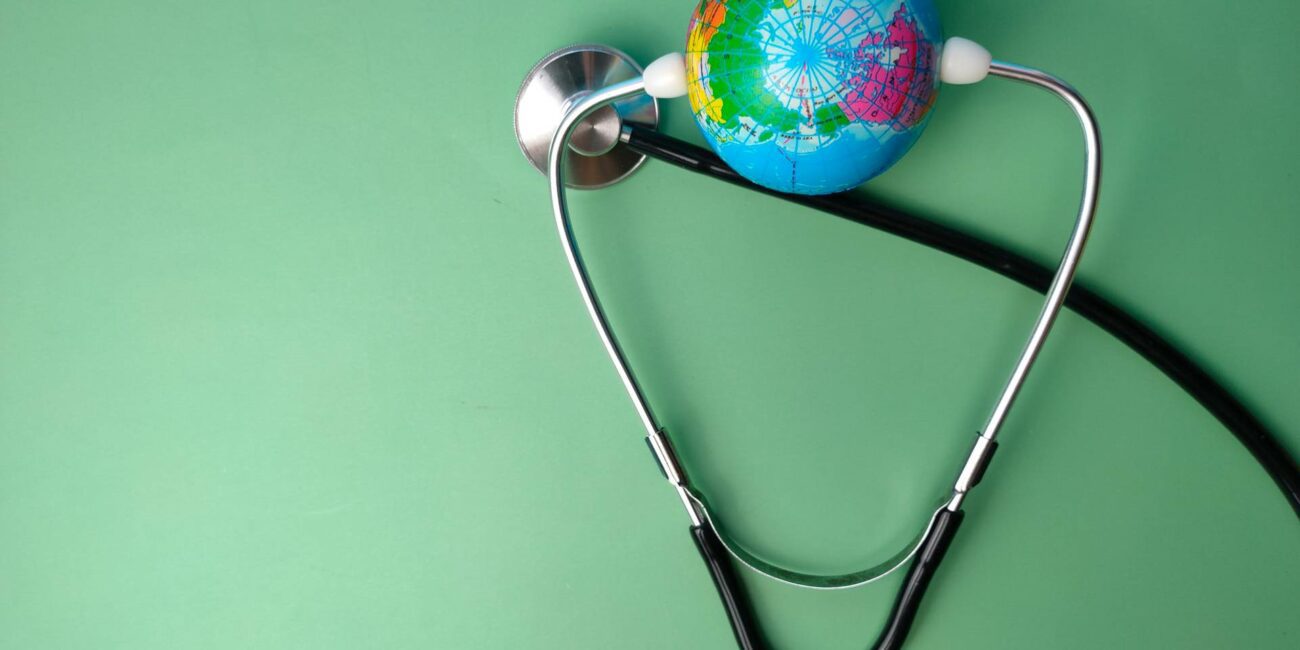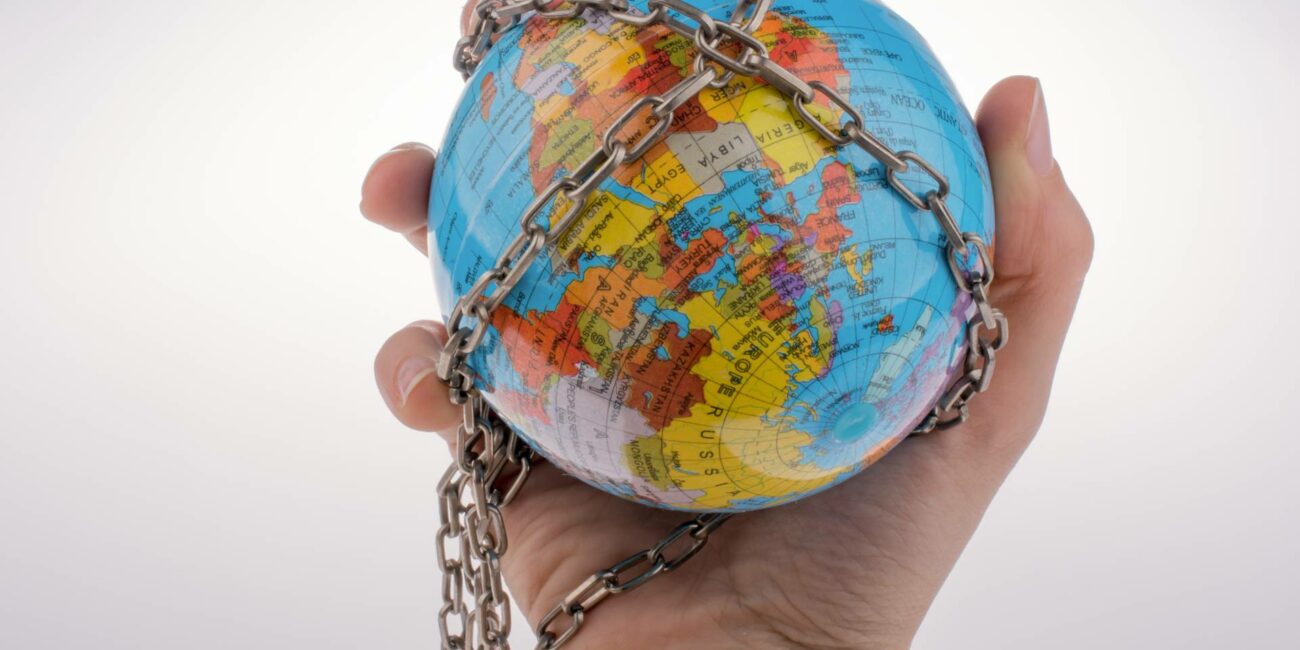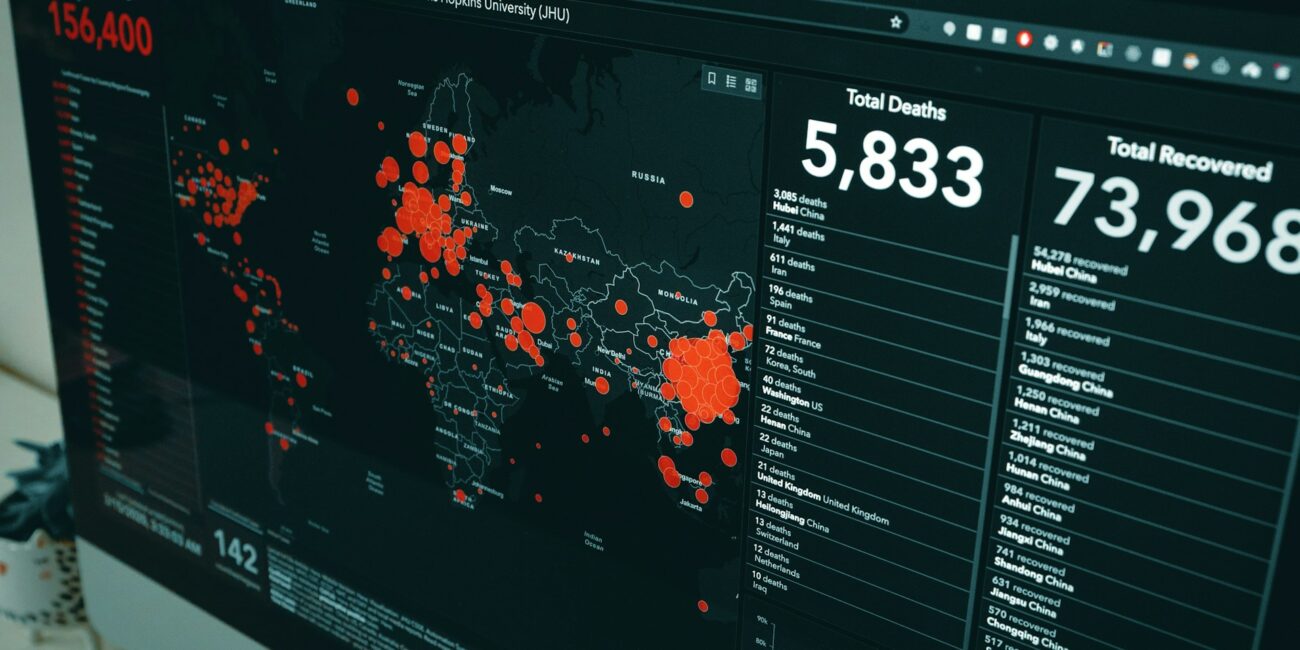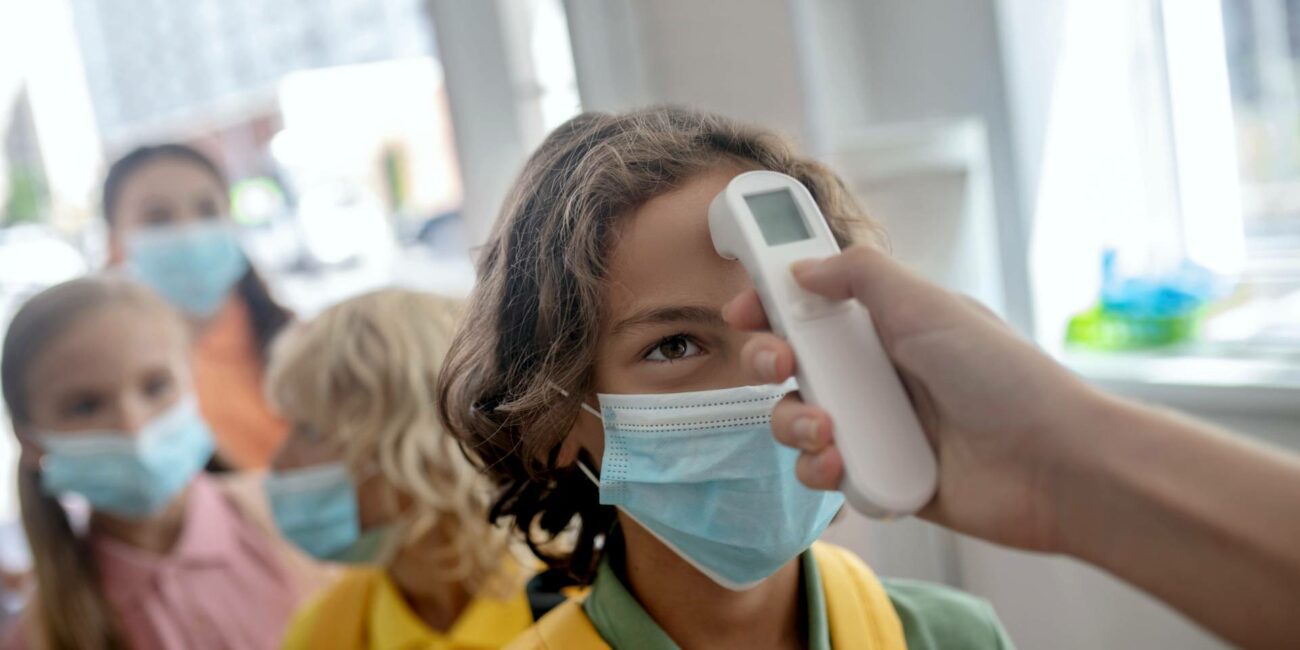The World Health Organization (WHO) recommends that babies’ lives may be ended up until the moment they emerge from the birth canal, without delay, whenever a pregnant woman requests it. Through its updated Abortion Care Guideline released in 2022, WHO expects all Member States to implement this policy.
This article is not about whether WHO’s policy is right or wrong, but about the process used to reach its conclusions, and what this tells us about WHO as a legitimate global health advisory body.
Dealing with a difficult topic
It is important to be able to say things that are true, even if this feels awkward. . When opinions become polarised, stating something consistent with the position of ‘the other party’ can feel worse than being dishonest in support of your preferred stance. But this demeans us and does not help anyone.
There are few issues that polarise (Western) society more than abortion. I am tied to neither side of this debate. As a medical practitioner, I have taken part in surgical abortions, helping women to terminate a pregnancy that they decided they did not want to continue. I have also assisted some hundreds of women to deliver babies.
I have been with tiny premature babies of just 20 weeks gestation when they died. I have gently cradled a very premature child of my own, fully human in my hands, his outstretched hand the size of my thumbnail. He saw light, and felt hunger, pain and fear – his outstretched hand the size of my thumbnail. He could have been killed in many places if he had not happened to be born early.
Many thousands of girls and women die excruciating deaths each year from sepsis resulting from unsafe abortions performed because safe abortion is outlawed or inaccessible. The introduction to the WHO guideline notes that, particularly in low-income countries, three in every ten pregnancies end in abortion and nearly half of these are unsafe for the mother. I have lived in a Southeast Asian country where several thousand mostly young women are thought to die from botched abortions each year. These agonising deaths mostly cease when abortion is legalised.
Philosophically, I believe in the equality of all human beings and in the concept of bodily autonomy – no one has the right to interfere with and control another’s body. We own and must control our bodies, not because someone grants us this right, but because we are humans. This applies as much to medical procedures as it does to torture. And just as it applies to my own body, it applies to all others.
However, because there is both good and bad in the world – nurture and harm – the interpretation of this fundamental truth is not simple. At times we may be called upon to kill another person. We do this in war, for example, to stop a country being invaded and its people tortured, raped and killed. But we also uphold the right of conscientious objectors to decline to kill because of their religious or moral beliefs. Similarly, there is no simple right or wrong when it comes to the act of abortion, only right or wrong as it relates to intent.
As humans, we need to face such dilemmas fearlessly and honestly because truth is intrinsically better than lies. What’s more, simplifications of complex issues are frequently lies. In interpreting the same truths, we may decide on different actions. We need to recognise that life is full of difficult choices, that it is always harder for some than for others, and that we are all informed by different experiences.
An anecdote
A wise friend was once discussing the issue of abortion with people who, with good intentions, held vigils outside abortion clinics to dissuade women from entering. He recounted the words of a woman who had had an abortion at such a clinic: “What she had needed was someone to be with her to support her after she had left by the back door, not someone accosting her on the way in.”
Like much that life throws at us, dealing with abortion primarily requires truth, understanding and compassion, not dogma.
Policy must be based on compassion and respect for all of humanity. To impose one’s views on others irrespective of evidence and without respect for alternate opinion is a form of fascism.
The WHO position on abortion, and what it means
WHO released its Abortion Care Guideline in early 2022, updating and combining previous publications on the social, ethical and medical aspects of abortion into one volume. As a ‘guideline’ rather than a recommendation, WHO expects the document to be followed by the 194 Member States that make up the World Health Assembly. WHO, of course, does not have the power to enforce guidelines. However, in the WHO lexicon, ‘guideline’ is a good practice recommendation that WHO considers to be of the highest quality, and which it therefore expects member states to abide by.
To ensure that it is evidence-based, guideline development is supposed to involve a wide range of experts and stakeholders who gather to weigh evidence, using this to carefully formulate ‘best practice’. The process should be transparent, and the data traceable. A committee within WHO oversees this process, ensuring that the guideline reflects the Organization’s principles and way of working.
WHO’s guideline recommends unequivocally that abortion be performed on request of a pregnant woman, at any time during pregnancy up until delivery, without any delay that may potentially cause the pregnant woman distress.
Recommend against laws and other regulations that restrict abortion by grounds abortion is available when carrying a pregnancy to term would cause the woman, girl or other pregnant person substantial pain or suffering …
Remarks:
iv. health grounds reflect WHO’s definitions of health and mental health (see Glossary);
[A state of complete physical, mental and social well-being and not merely the absence of disease or infirmity]
[Mental health: A state of well-being in which every individual realizes their own potential, can cope with the normal stresses of life, can work productively and fruitfully, and is able to make a contribution to their community]
Gestational age limits delayed access to abortion, especially among women seeking abortions at later gestational ages… Gestational age limits have been found to be associated with…increased rates of maternal mortality and poor health outcomes.
The evidence also showed that grounds-based approaches that require fetal impairments to be fatal for abortion to be lawful frustrate providers who wish to support patients and leave women no choice but to continue with pregnancy. Being required to continue with a pregnancy that causes significant distress violates numerous human rights. States are obligated [emphasis added] to revise these laws to make them compatible with international human rights law.
Put another way (but with exactly the same meaning), WHO’s official position is that a woman may abort an unborn embryo soon after conception, or kill her baby as it enters the birth canal during labour, and it is the health profession’s role to do this without delay upon request.
WHO’s logic in arriving at its conclusion is deeply flawed, and can only be reached by adopting a specific view of humanity that is inconsistent with that of most Member States. If WHO indeed works for all its Member States and not just for narrow, unrepresentative interests, this is an illegitimate position.
In its lack of inclusivity, the Guideline demonstrates a growing culture within international health that is deeply troubling and dangerous. This culture relies on a denial of reality in order to achieve a pre-ordained result. It deliberately misuses human rights norms to force a particular world view on others. This represents a form of cultural colonialism, which is quite the opposite of the community-driven and anti-colonialist ideals around which WHO was formed.
WHO’s human rights justification
WHO justifies its position on abortion by citing what it considers to be relevant human rights norms and law. It holds that there is no choice but to allow abortion, as refusing or delaying abortion, such as through a requirement for counselling, could potentially distress the pregnant woman.
When offering and providing counselling, it is essential to apply the following guiding principles:
• ensure that the individual is requesting the counselling and make it clear that counselling is not required;
In causing distress, her human right to be free from ill-health (in this case psychological pain) has been infringed. This is based on the definition of health in WHO’s Constitution, which includes physical, mental and social well-being. This weak argument presupposes that disagreement with another person’s views constitutes a violation of that person’s rights. Society could not function on this basis.
In establishing the required evidence base for maintaining its incongruous position, WHO has to consider only risk and no benefit.
The studies also showed that where women requested an abortion and were denied care due to gestational age this could result in the unwanted continuation of pregnancy … those who presented at 20 weeks’ gestation or later. This outcome can be viewed as incompatible with the requirement in international human rights law to make abortion available, when carrying a pregnancy to term would cause the woman substantial pain or suffering, regardless of pregnancy viability.
The studies used by WHO do not, however, only record negative outcomes of delays resulting from required counselling, but note that women also considered that legally-required delays and counselling could be positive, with some opting not to have an abortion as a result.
If WHO recognised any requirement for counselling, it would have to recognise that practitioners withholding counselling would be putting informed consent in jeopardy, and that in some cases unborn babies (what WHO calls ‘pregnancy tissue’) would be lost when an informed woman, upon reflection, may have preferred to keep it. Informed consent is at the basis of modern medical ethics and an internationally-accepted human right. WHO recognises in the document that “States must ensure that informed consent is provided freely, safeguarded effectively, and based on complete provision of high-quality, accurate and accessible information”. Incongruously, it then considers that the rights of that woman are violated if the abortion is delayed in order to ensure that information, and time for reflection, are provided.
The human in ‘human rights’
At no place in the document is the definition of ‘human’ discussed. WHO’s argument for abortion requires absolute acceptance that human rights do not apply in any form prior to birth. The only human rights acknowledged in the document are those of the pregnant woman, with disputable subsidiary rights of healthcare providers. Discussion of foetal (unborn baby) rights is absent. The Universal Declaration of Human Rights does not specify a time when dividing cells become human, creating uncertainty for the Guideline’s argument.
Defining ‘human’ is difficult. It may be argued that the lack of independence, or ability to express thoughts to others, prevent the application of human rights to a foetus. This claim would require dependent adults or children who cannot articulate their thoughts to be considered sub-human, such as people who are severely mentally or even physically disabled, and those who are comatose. This is a position previously adopted by fascist and eugenic regimes that believed in a hierarchy of human worth. It would be unfitting for WHO.
The only intrinsic difference between the baby within and without the womb, apart from location, is the umbilical cord. Suggesting that the functioning of this foetal organ, composed solely of foetal tissue, somehow prevents the rest of the foetus from being a sentient being would require redefinition of ‘sentient’. For its last few months within the uterus, when it could readily survive outside, it has its own unique and complete human DNA, a beating heart, and independent movement. Some mothers will say it responds to familiar sounds. If removed from the uterus, it displays sensations of pain, distress, and hunger, and an ability to cry; it responds to stimuli; recognises light, shapes and sounds; and drinks milk. If this sentient being is not human, then what is it?
Any recognition of the humanness of WHO’s ‘pregnancy tissue’ requires acceptance that two persons comprise the woman–foetus relationship, and thus that there are two potential victims. The human rights basis of WHO’s guidelines would then require one to be considered subservient to the other. This would require a rewriting of the human rights agreements on which the panel based its determination (a hierarchy of human worth).
Alternatively, it can be decided that the rights to life of one can be infringed to benefit the other. We do this in war, and we may do it in a triage situation at the scene of an accident. We also do this sometimes in pregnancy. It involves recognising hard and unpleasant choices, as it involves putting value on potential harm to the woman versus harm to the second person in the equation. This approach would fit with human rights conventions, but would disallow an approach that relies solely on a dogma that claims the pregnant woman’s welfare is the only relevant concern. The failure of WHO to recognise the potential of two humans with attendant rights in a pregnancy smells like cowardice. Their argument is flawed.
Pregnancy tissue or person?
The Guideline manages the definition of the unborn by avoiding the use of the term ‘baby’ anywhere in its 120 pages – itself quite a feat of drafting for an abortion guideline. The term ‘pregnancy tissue’ is used most frequently, to describe the growing mass within the uterus:
Pregnancy tissue should be treated in the same way as other biological material unless the individual expresses a desire for it to be managed otherwise.
However, if the foetus happens to be born at 28 weeks, WHO considers it a fully-fledged human. It is recorded in human death statistics, and elsewhere WHO provides guidance on how to support its health and welfare. WHO’s 2022 Recommendations for care of the preterm or low-birth-weight infant state: “The care of preterm and LBW infants is a global priority.” To kill a baby once out of the birth canal is murder in most countries – the ultimate violation of human rights.
For WHO’s entire human rights argument to be valid, the definition of a human must therefore rely entirely on location – inside or outside the uterus. WHO must hold that at some moment during the final stage of labour, the ‘pregnancy tissue’ is suddenly transformed into an entirely different entity – from irrelevant tissue to a full person with the rights and immeasurable worth that this implies.
If this Guideline is followed, my 28-week baby became human not through any intrinsic value or worth, but because the drugs suppressing labour became ineffective. If these drugs had worked, WHO holds that my child could have been subsequently killed, just as one might excise an annoying tumour. From ‘pregnancy tissue’ to ‘global priority’ depends, in WHO’s eyes, on a matter of seconds and centimetres. Whether a live abortion ‘product’ is a global priority or pregnancy tissue is not discussed – the assumption is that the intent to abort diminishes the status of the erstwhile human to a mere irrelevance.
Conscientious objection and health providers
The Guideline considers that it “may” be necessary to remove the right of the provider to conscientious objection where this will delay an abortion. This is in fascinating contrast to the emphasis on avoiding any risk of emotional harm or stress to the pregnant woman. Here rights apply only to the pregnant woman, but not to other involved humans.
Recommend that access to and continuity of comprehensive abortion care be protected against barriers created by conscientious objection.
Rights of the provider to follow their own cultural or religious beliefs may be overridden “if no alternative provider is available.”
If it proves impossible to regulate conscientious objection in a way that respects, protects and fulfils abortion seekers’ rights, conscientious objection in abortion provision may become indefensible.
Providers are not classed as equal humans; their rights are subservient. If we are to believe that ‘stress’ is a legitimate harm from which the pregnant woman must be protected as a human right, then this must also apply to stress caused to a provider who is forced to act against their conscience. We are faced with at least two human beings whose rights must be weighed together. WHO’s simplistic human interpretation again seems to fall apart.
The Guideline committee did appear to be aware of this dilemma, and resorted to EU human rights law to support their case (though legal arguments may question its consistency with the Universal Declaration of Human Rights). The right to conscientious objection in other instances is strongly protected in international law. Whilst the Guideline quotes sections of EU law, it fails to elucidate contrary arguments. French human rights law, for instance, takes a contrary view and upholds the right of a medical or nursing practitioner to object. Recognising the issue of forcing a practitioner to act in a way they consider wrong, the law explicitly notes the inherent moral difficulty of setting rules in this area.
The rights of parents and minors
The rights of parents or guardians to make decisions on medical procedures for minors are recognised in most WHO Member States, whilst being more widely questioned in some Western cultures. The Guideline considers only one view throughout, that the ability to provide informed consent is unrelated to age. Practitioners therefore have a duty to maintain confidentiality if a pregnant girl requests an abortion and prefers her parents to be unaware.
“Recommend that abortion be available on the request of the woman, girl or other pregnant person without the authorization of any other individual, body or institution.”
This is a complicated area, and there are strong arguments for protecting confidentiality, as there are for parental involvement in consenting to medical procedures for children under their protection. WHO considers only one specific Western view to be legitimate and therefore superior. Potentially contrary views, such as those held by Islamic, South Asian, East Asian, or most Christian communities, are considered to be illegitimate and inappropriate.
WHO, inclusivity, and cultural colonialism
In formulating a guideline on an issue critical to human rights and values, the world might expect WHO to consider the rich diversity of its cultural, religious and societal life. This is not evidenced within the document’s 150 pages, although the drafting committee did note that such opinions and cultures are important in the introduction:
The needs of all individuals with respect to abortion are recognized and acknowledged in this guidance,
and further:
WHO guidelines systematically incorporate consideration of the values and preferences of end-users of the recommended or suggested interventions into the process of developing the guidance.
Those formulating the guidelines were seemingly unaware that such values and preferences might lead to differing opinions regarding the killing of an unborn baby.
WHO states that a global survey was conducted, followed by a meeting with participants from 15 (of 194) Member States. Either no one in this ‘inclusivity’-driven process raised any objections, or those in charge of the process considered such opinions so inferior to their own as to be unworthy of record. If cultural colonialism needs definition, this act of imposing one’s values on others through an apparent belief in the superiority of one’s own views seems an excellent example.
The world does not need to return to colonialism
WHO, heavily sponsored by private vested interests, is not the population-oriented organisation it was 75 years ago. Along with the Covid-19 response, this Guideline demonstrates the extent to which WHO has regressed to a narrow Western-derived world view that even many in the West would find appalling. It seeks to impose this on others, considering alternate approaches unworthy of serious discussion.
Whatever one’s views on abortion, the flaws in WHO’s human rights arguments, and its clear avoidance of diversity of opinion, suggest an organisation focused on dogma rather than evidence. Abortion is a morally complicated area. Policy must be based on compassion and respect for all of humanity. To impose one’s views on others irrespective of evidence and without respect for alternate opinion is a form of fascism. WHO may have a place in advising on safety of a medical procedure, but not in pontificating about moral rights and wrongs. It is not there to tell people how to live their lives, but to support them with the tools to do so.
Countries currently considering whether to grant greater powers to WHO would do well to question whether the organisation is compatible with their culture, ethics and beliefs. The abortion guideline is a reflection of WHO’s growing unfitness to lead global health.
David is a clinical and public health physician with a PhD in population health and background in internal medicine, modelling and epidemiology of infectious disease. Previously, he was Director of the Global Health Technologies at Intellectual Ventures Global Good Fund in the USA, Programme Head for Malaria and Acute Febrile Disease at FIND in Geneva, and coordinating malaria diagnostics strategy with the World Health Organization.




